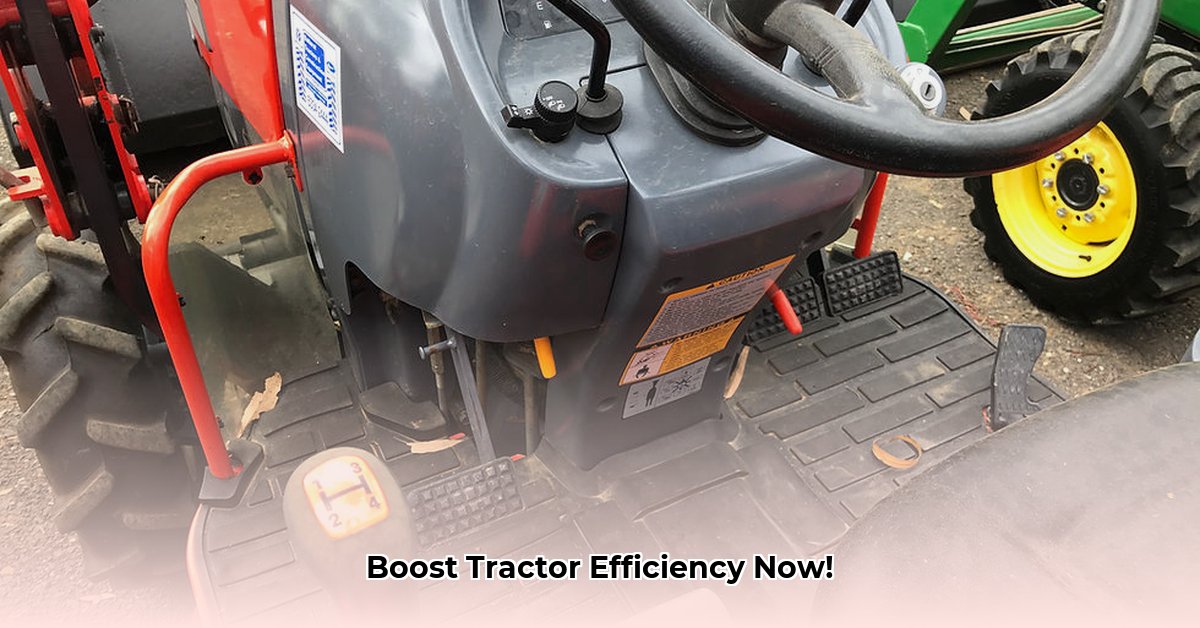
Understanding Shuttle Shift and Hydrostatic Transmissions
Choosing the right tractor is crucial for efficient farming. A key decision involves selecting the appropriate transmission: shuttle shift or hydrostatic. Both types offer distinct advantages and disadvantages; the optimal choice depends entirely on your specific farming needs and priorities. This guide will help you understand the differences and make an informed decision. For more information on tractor implements, check out this helpful resource on tractor attachments.
Shuttle Shift Transmissions: Simplicity and Efficiency
Shuttle shift transmissions simplify shifting between forward and reverse gears. This is particularly beneficial for repetitive tasks requiring frequent direction changes, such as planting or cultivating. Many shuttle shift systems offer a "power shuttle" option, allowing for seamless transitions between forward and reverse without using the clutch pedal, reducing wear and improving operator comfort. "Power Shuttle" systems usually necessitate a higher initial investment compared to basic shuttle shift systems, but this is often offset with improved efficiency and reduced wear.
However, this simpler design does not always lead to higher efficiency. How can power be maximized and maintained in the long term?
Hydrostatic Transmissions: Smooth Control, but Higher Costs?
Hydrostatic transmissions utilize hydraulics instead of gears, providing infinitely variable speeds. This allows for smooth speed adjustments without stopping, ideal for precision work like operating a front-end loader or maneuvering in confined spaces. The consistent, smooth operation is highly effective for situations requiring fine motor control and precise maneuverability.
However, hydrostatic systems are generally less efficient than shuttle shift transmissions, particularly when utilizing the power take-off (PTO) – the shaft that powers implements like mowers and balers. Moreover, hydrostatic transmissions typically demand more frequent and potentially more expensive maintenance.
Head-to-Head Comparison: Shuttle Shift vs. Hydrostatic
This table summarizes the key differences:
| Feature | Shuttle Shift | Hydrostatic |
|---|---|---|
| Speed Control | Specific gears; quick forward/reverse changes | Infinitely variable speed; smooth transitions |
| Efficiency | Generally higher PTO efficiency | Typically lower PTO efficiency |
| Best Suited For | Repetitive field work, PTO-driven equipment | Precision work, loader operations |
| Maintenance | Simpler and less frequent (generally) | More complex and frequent |
| Initial Cost | Often lower | Usually higher |
Choosing the Right Tractor: Key Questions to Ask
Before purchasing, consider these crucial factors:
- Primary Tractor Use: Predominantly field work or loader operations? A balanced approach?
- Power Demand: How often will you use PTO-driven equipment?
- Budget: Account for both initial cost and ongoing maintenance.
- Mechanical Expertise: Hydrostatic systems require specialized knowledge for maintenance. Do you, or your operation, have the resources or the expertise to maintain the system independently?
Dr. Amelia Hernandez, Agricultural Engineering Professor at the University of California, Davis, states: "The optimal transmission type depends heavily on the specific tasks and operational demands. A comprehensive evaluation of your farm's needs is critical before making a purchase."
Maintenance and Long-Term Costs
Regular maintenance is crucial for extending the lifespan of any tractor. However, hydrostatic systems tend to require more frequent service from qualified mechanics, increasing long-term expenses.
Case Studies: Real-World Experiences (Future Section)
This section will feature case studies of farmers using both transmission types to highlight real-world performance and maintenance experiences. (Future content will include interviews with experienced farmers using both system types.)
The Final Verdict: Your Needs Define the Best Choice
There's no universally superior transmission. The best choice depends on your farm's specific operational demands, budget, and long-term maintenance considerations. Carefully analyze your needs, weigh the pros and cons of each type, and select the system that best aligns with your farming operation's priorities for optimal productivity and efficiency.